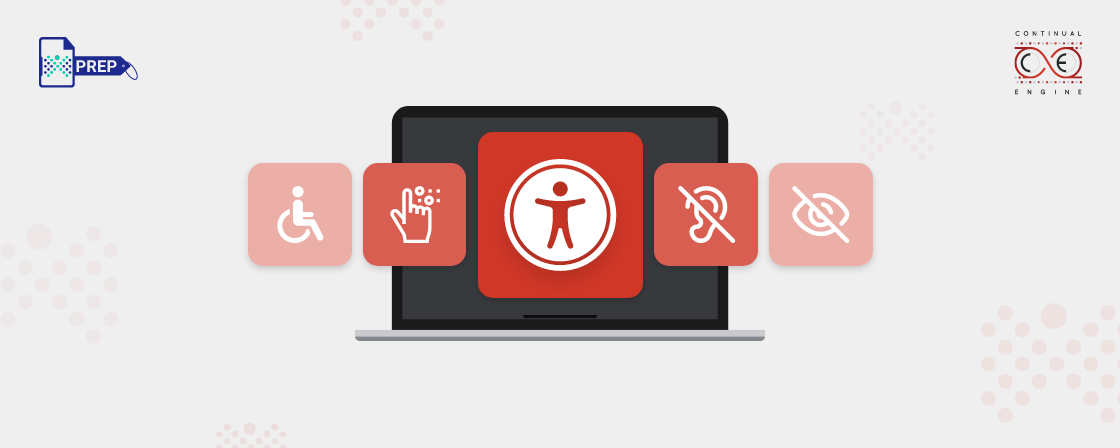Key Takeaways -
- Web Content Accessibility Guidelines (WCAG) ensure web accessibility for everyone, including people with disabilities.
- Every country has laws, accessibility standards, compliance standards, and penalties.
- Meeting international accessibility standards is best to avoid lawsuits.
An Overview of International Web Accessibility Standards
With our digital dependency, the need for web accessibility has grown. Web accessibility ensures that people with disabilities enjoy the same access as everyone else.
Published in 1999, the Web Content Accessibility Guidelines (WCAG) are responsible for making digital content accessible to people with disabilities. Governed by four principles: perceivable, operable, understandable, and robust, these guidelines have three levels of testable success criteria for conformance: A (the minimum level), A.A. (medium level), and AAA (highest level).
Despite this, many accessibility barriers still exist. Every country has its laws and regulations to target them. Currently, WCAG has become the international accessibility standard, as many countries have adopted them as a reference. Let us briefly look at web accessibility laws in these countries.
United States of America
The Americans govern Web accessibility in the U.S. with Disabilities Act of 1990 (ADA) and Section 508 of the Rehabilitation Act of 1973. The ADA and Section 508 ensure equal access and opportunities by making web accessibility a priority to protect people with disabilities from discrimination. Though the ADA does not explicitly mention websites, compliance with the international accessibility standards WCAG is necessary.
European Union
The E.U. actively addresses website accessibility issues by coordinating these two policies within the member states. EN 301 549, or The E.U. Web Accessibility Directive and The European Accessibility Act, strives to eliminate web accessibility barriers in the public sector to ensure equal participation for people with disabilities. As a result, all public websites must comply with WCAG accessibility.
Canada
Canada and its provinces have web accessibility-specific laws, such as the Accessible Canada Act. Along with this Act, the provincial accessibility laws such as the Accessibility for Ontarians with Disabilities Act (AODA) of 2005, Accessibility for Manitobans Act (AMA) of 2013, and the Nova Scotia Accessibility Act of 2017 ensure goods, services, and ICT are equally accessible to the public. It also requires compliance with international accessibility standards WCAG.
Australia
Australia’s Disability Discrimination Act of 1992 requires all Australian government organizations to make their information accessible to everyone, especially those with disabilities. They also accepted the Procurement Standard Guidance (2016) and AS EN 301 549 (similar adoption of EN 301 549 V1.1.2), which requires all government and non-government websites to follow the latest accessibility standards of WCAG 2.0.
United Kingdom
U.K.’s Equality Act of 2010 prohibits discrimination against people with disabilities in providing goods, facilities, and services. However, it does not specify the services. The Code of Practice that accompanies the Act explicitly mentions websites as one of the “services to the public.”
India
India aims to remove barriers to website accessibility with the Rights of Persons with Disabilities Act of 2016 (RPD) and the Guidelines for Indian Government Websites. The Rights of Persons with Disabilities Act (RPD) requires all sectors in India to provide equal opportunity and accessibility to people with disabilities. Guidelines for Indian Government Websites authorize the design of information and communication technology(ICT) to be accessible to people with all types of disabilities.
Germany
Germany is moving toward a barrier-free future with its accessibility laws Equal Opportunity Act (Disability Equality Act – BGG) and Federal Ordinance on Barrier-Free Information Technology or BITV 2.0. The latter follows the latest version of international accessibility standards WCAG.
Final Thoughts
- Web Content Accessibility Guidelines (WCAG) aim for web accessibility for everyone, including people with disabilities.
- WCAG is considered the international accessibility standard.
- Every country has its laws and accessibility standards.
- Most countries reference WCAG as compliance standards to meet web accessibility requirements.
